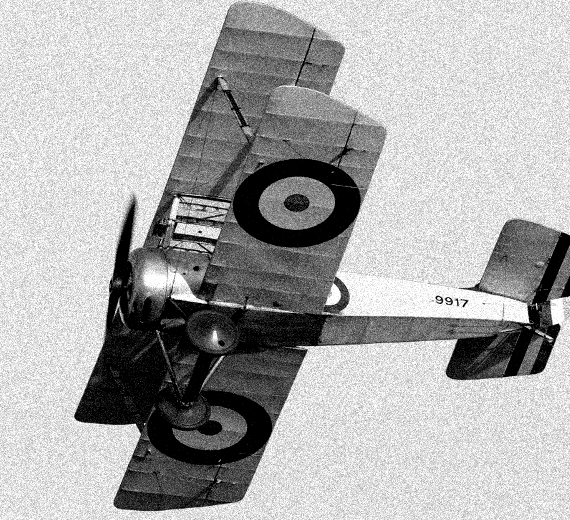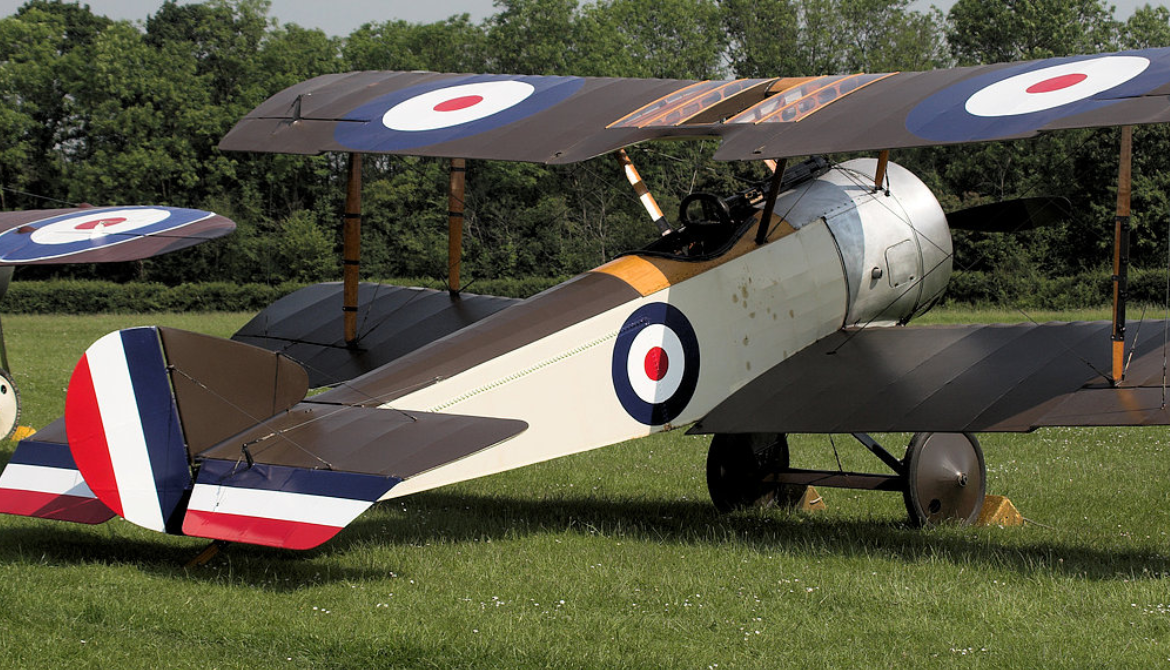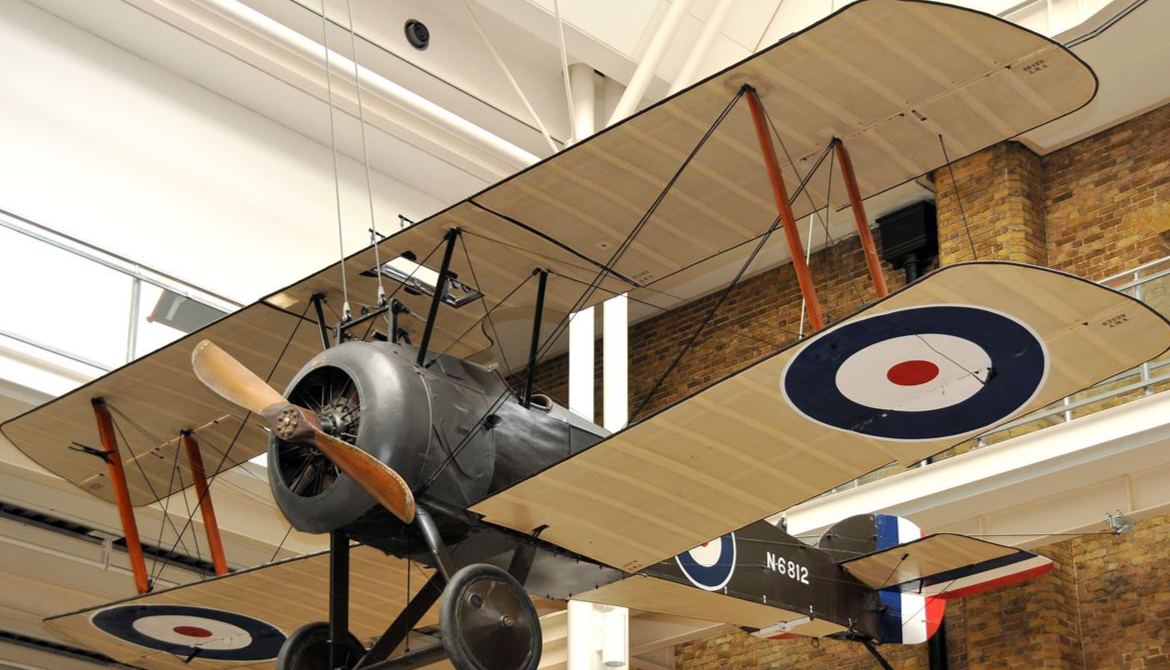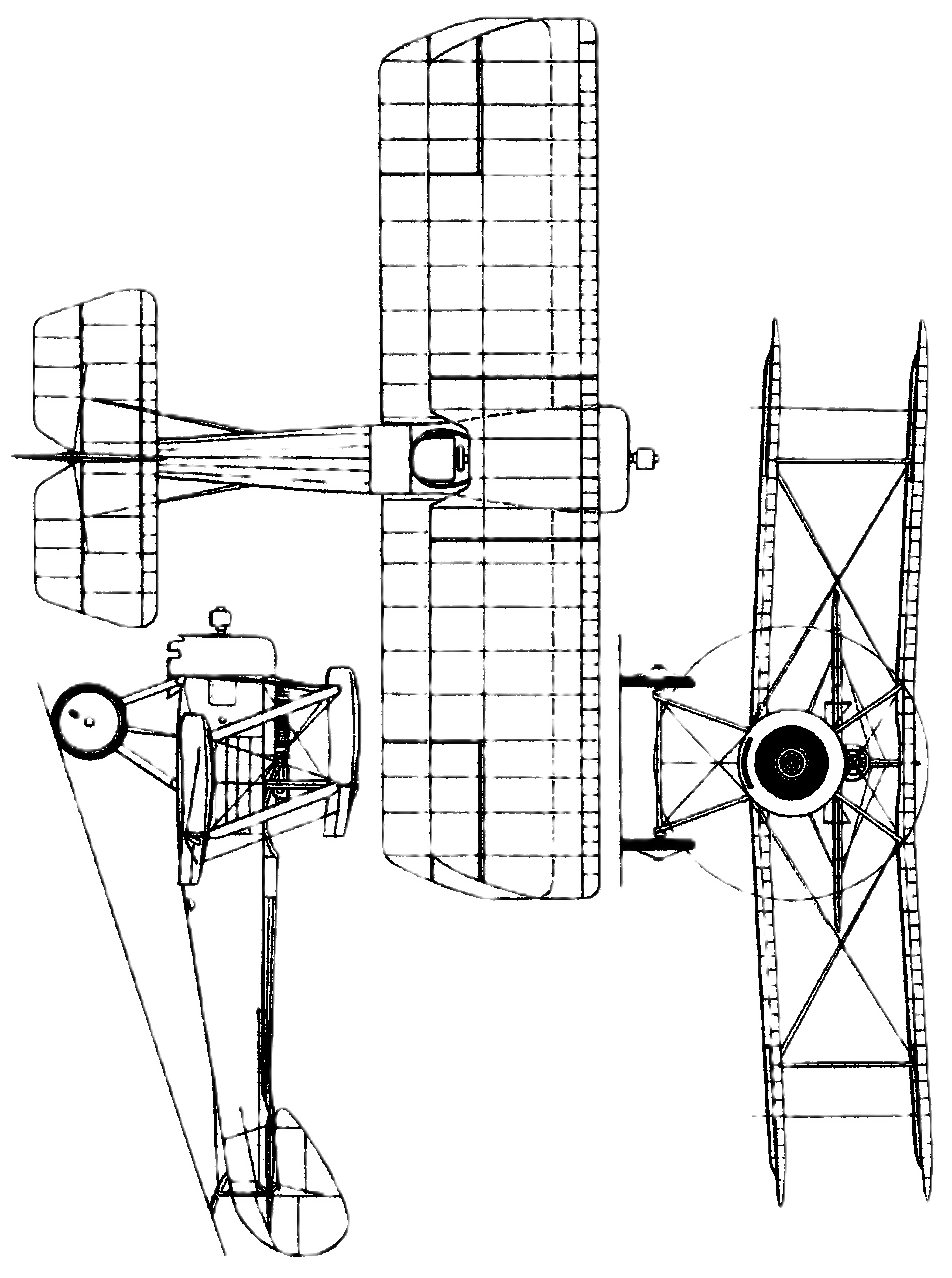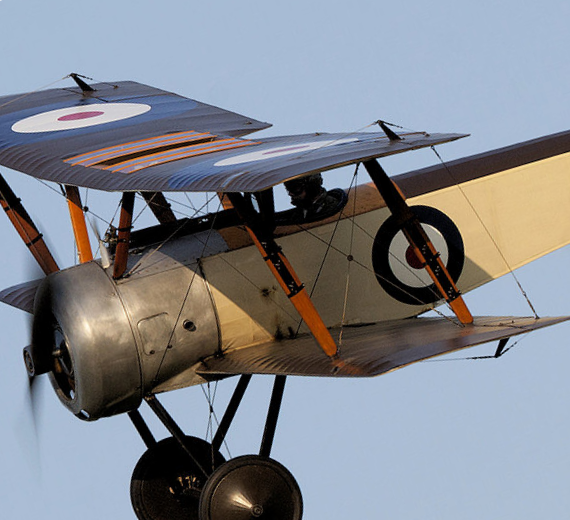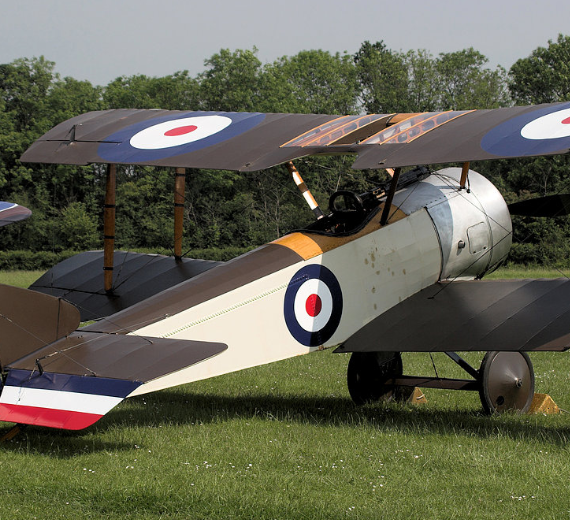Sopwith Aviation
Sopwith Pub (80 hp )
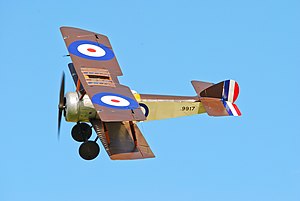 |
|
| Role | Biplane fighter |
|---|---|
| Manufacturer | Sopwith Aviation Company |
| Designer | Herbert Smith |
| First flight | 9 February 1916 |
| Introduction | October 1916 |
| Status | retired |
| Primary users | Royal Flying Corps Royal Air Force Royal Naval Air Service |
| Produced | 1916–1918 |
| Number built | 1,796 |
| Variants | Beardmore W.B.III |
.
History Sopwith Aviation Company
Sopwith Pub (80 hp Le Rhône)

The Sopwith Pup is a British single-seater biplane fighter aircraft built by the Sopwith Aviation Company. It entered service with the Royal Naval Air Service and the Royal Flying Corps in the autumn of 1916. With pleasant flying characteristics and good manoeuvrability, the aircraft proved very successful. The Pup was eventually outclassed by newer German fighters, but it was not completely replaced on the Western Front until the end of 1917. The remaining Pups were relegated to Home Defence and training units. The Pup's docile flying characteristics also made it ideal for use in aircraft carrier deck landing and takeoff experiments and training.
Design and development

In 1915, Sopwith produced a personal aircraft for the company's test pilot Harry Hawker, a single-seat, tractor biplane powered by a seven-cylinder 50 hp (37 kW) Gnome rotary engine which was known as Hawker's Runabout. Another four similar aircraft have been tentatively identified as Sopwith Sparrows. Sopwith next developed a larger and more powerful aircraft as a fighter that was heavily influenced by this design, although controlled laterally with ailerons rather than by wing warping.
Home Defence duties

.
The raids on London by Gotha bombers in mid-1917 caused far more damage and casualties than the earlier airship raids. The ineffective response by British interceptor units had serious political repercussions. In response, No. 66 Squadron was withdrawn to Calais for a short period, and No. 46 was transferred for several weeks to Sutton's Farm airfield near London. Two new Pup squadrons were formed specifically for Home Defence duties, No. 112 in July, and No. 61 in August.
0
KmCeiling
0
HrEndurance
0
Km/hAircraft Speed
0
Max Crew
Photo Gallery
Sopwith Aviation Company
Sopwith Pub (80 hp Le Rhône)


Sopwith Aviation Company
Sopwith Pub (80 Hp)
General Info
-
-
- Crew: 1
- Length: 19 ft 3.75 in (5.8865 m)
- Wingspan: 26 ft 6 in (8.08 m)
- Height: 9 ft 5 in (2.87 m)
- Wing area: 254 sq ft (23.6 m2)
-
-
Powerplant
-
-
- Empty weight: 787 lb (357 kg)
- Gross weight: 1,225 lb (556 kg)
- Powerplant: 1 × Le Rhône 9C 9-cylinder air-cooled rotary piston engine, 80 hp (60 kW)
- Propellers: 2-bladed wooden fixed-pitch propeller
-
Performance
- Maximum speed: 112 mph (180 km/h
- Range: 337 mi (542 km, 293 nmi)
- Endurance: 3 hours
- Service ceiling: 17,500 ft (5,300 m)
- Time to altitude:
-
-
-
- 10,000 ft (3,048 m) in 14 minutes
- 16,100 ft (4,907 m) in 35 minutes
-
-
Armament
-
-
- Guns: 1 × .303 in (7.7 mm) Vickers machine gun fired forward through the propeller by means of a Sopwith-Kauper gun synchronizer
-
.
Links to Youtube & Others
B1807 – Pup under restoration to airworthy condition. Built by Standard Motors in 1917 and delivered to a Home Defence squadron. This aircraft was originally fitted with a 100 hp (75 kW) Gnome Monosoupape engine, along with the distinctive three-quarter vented cowling
Sopwith Aviation Sopwith Pub (80 Hp)
The raids on London by Gotha bombers in mid-1917 caused far more damage and casualties than the earlier airship raids.
Youtube Link
Sopwith Pups were also used in many pioneering carrier experiments. On 2 August 1917, a Pup flown by Sqn Cdr Edwin Harris Dunning became the first aircraft to land aboard a moving ship, HMS Furious
